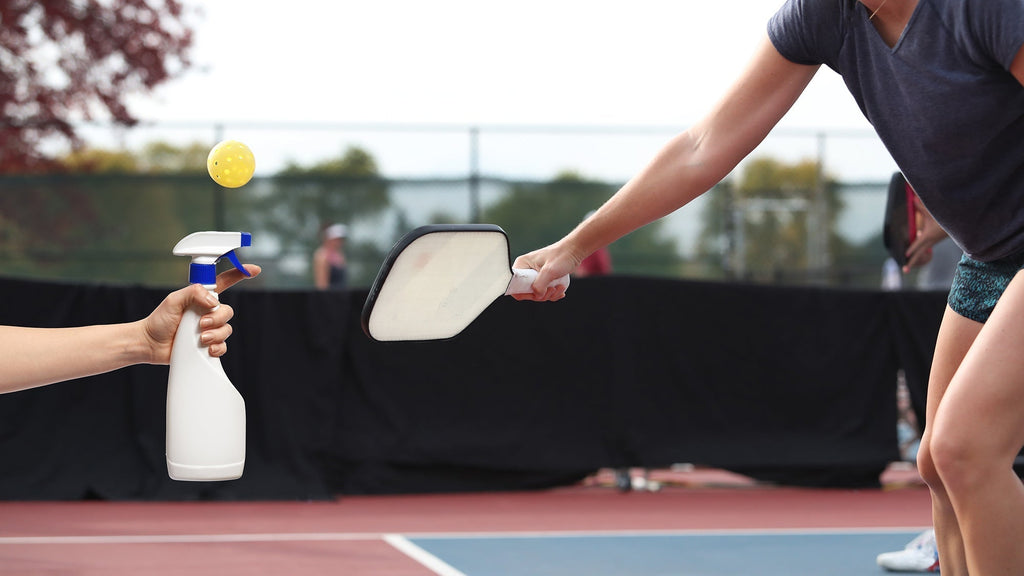Why Taping Your Pickleball Paddle Grip Matters (More Than You Think)
Let's be real—most of us don't think twice about our paddle grip… until it starts slipping mid-game or we play with a white grip. White shows everything, especially the dirt and sweat accumulated while you play a round of pickleball. While black and brown handles may hide residue, the buildup remains!
The good news? Using an overgrip or replacing your grip is super easy and makes a huge difference. A fresh grip or grip tape helps you hold your paddle more securely, reduces strain on your wrists, and keeps you looking sharp, especially if you play often or in sweaty weather.
Why Do I Need an Overgrip?
If you're new to pickleball, thinking about adjusting your grip might seem like a mystery. But if you're coming from a tennis background, regripping your paddle could feel like second nature. Here's a guide to help, whether you're a pickleball newbie or just looking to improve your game.
An overgrip is a thin layer that sits over your original grip. It helps protect your base grip from damaging sweat and oils from your hands. Overgrips keep your handle cleaner and more comfortable, and they are easy to replace. Switching out your overgrip regularly keeps your paddle as fresh as your game.
Overgrips go right on top of your existing grip. They're great if you want to refresh your handle quickly and often. They come in various colors, allowing you to add some pizzazz to your paddle.
What Does an Overgrip Do?
Provide a tacky surface, giving you more control and precision.
Change handle size. If you like the feel of your paddle handle, look for a thin tape. If you want your handle to be more oversized, you can add thickness with an overgrip.
Absorb sweat, preventing your paddle from slipping out of your hand.
Keep the base grip clean. No one likes sweaty, dirty grips in the Open Play cue!
Overgrips can reduce vibration, giving you a more comfortable playing experience.
How Often Should You Change Your Overgrip?
To get the most out of your overgrip, replace it after about 12-16 hours of play. If you play a few times a week, change your grip every 1 - 2 months. If your paddle starts to feel slick or you catch yourself adjusting your grip mid-game, it's probably time. A fresh overgrip improves your control and keeps your paddle feeling like new.
No fancy tools are necessary. Simply grab a pair of scissors and a new overgrip. We love overgrips by our friend's PIKKL. Finishing tape comes in the package.
How Do I Apply Overgrip to My Paddle?
- Wrap the tape in the same direction as the grip.
- Start wrapping at the bottom of the handle. If you're right-handed, pull the tape toward the right as you wrap it; lefties should pull toward the left.
- Wrap the grip tightly but not too much. Aim for about 55% tension on the first few rotations. You ensure the grip feels comfortable without being too bulky.
Once you reach the throat, tighten the wrap to about 95% tension for a secure fit. - If there's excess grip, trim it off at a 45-degree angle. The finishing tape included with your regrip is used to secure it in place.
For a helpful video, check out The Pickleball Helpline.

Wrapping It Up
By taking care of your paddle's grip, you're setting yourself up for success every time you hit the court! Need a new Pickleball paddle? Check out Saltie Rose Pickleball Paddles with messages to keep you in style and having fun on the court. And, while you are at it, make sure your outfit is styled for success. Check out Saltie Rose Sets, comfortable apparel designed for women pickleball players of all skill levels.



Comments (0)